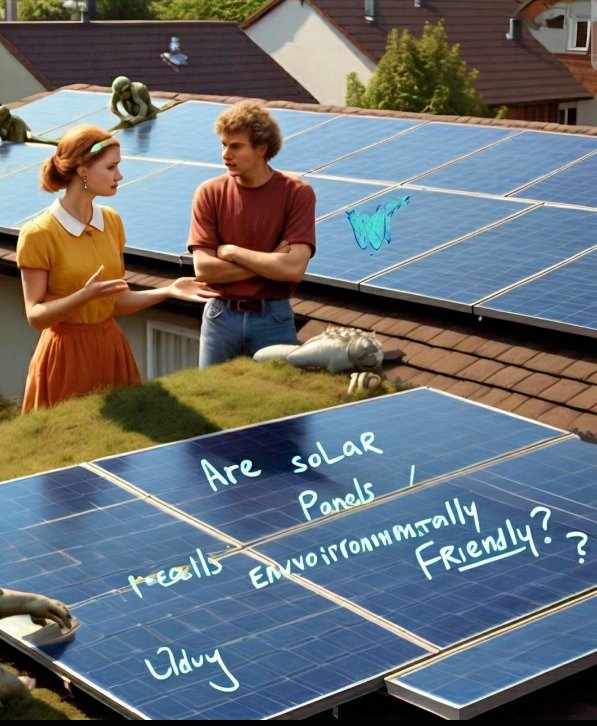Harnessing the Power of the Sun
At the heart of solar power is a simple yet powerful process: photovoltaic (PV) effect. Solar panels are made up of numerous solar cells, typically crafted from silicon, a semiconductor material. When sunlight hits these cells, it knocks electrons loose, creating an electric current. This phenomenon was first observed by French physicist Edmond Becquerel in 1839, but it wasn’t until the 1950s that we developed practical applications for it. Essentially, solar panels are like giant, sophisticated sunflowers, capturing sunlight and turning it into energy.
Efficiency Evolution: From Sci-Fi to Science Fact
Early solar cells had an efficiency of around 6%, which means only 6% of the sunlight hitting them was converted into usable electricity. Today, thanks to advancements in technology, commercial solar panels boast efficiencies of 15-22%. High-efficiency panels can even reach upwards of 25%. This leap is akin to going from a dial-up internet connection to fiber optic speed. Improvements in materials, cell design, and manufacturing processes have all contributed to this significant boost in efficiency, making solar energy more viable and attractive
Abundant and Renewable
One of the most compelling scientific facts supporting solar panel usage is the sheer abundance of solar energy. The sun delivers more energy to Earth in one hour than the entire world uses in a year. That’s right, every single hour, our planet receives enough sunlight to power everything from your morning coffee to global industrial processes for an entire year. Unlike fossil fuels, which are finite and depleting, solar energy is renewable. As long as the sun keeps shining, we have a virtually inexhaustible source of energy at our disposal.
Reducing Carbon Footprint
Solar energy is one of the cleanest sources of power available. Unlike fossil fuel power plants, solar panels don’t emit harmful pollutants or greenhouse gases. According to the National Renewable Energy Laboratory (NREL), switching to solar power can significantly reduce your carbon footprint. On average, a typical residential solar system can offset about 3-4 tons of carbon dioxide per year, equivalent to planting over 100 trees annually. Imagine, every rooftop solar panel installation is like creating a mini forest in your neighborhood!
Energy Independence and Security
Solar panels provide a decentralized power solution, meaning electricity generation happens right at the location where it’s needed, such as your home or business. This decentralization enhances energy security and reduces dependence on centralized power grids, which are vulnerable to outages and disruptions. Think of it as having a personal power plant on your roof. With solar panels, you’re less reliant on utility companies and more in control of your energy future. Plus, during peak sunshine hours, your solar system can produce excess energy, which can be stored in batteries or fed back into the grid.
Long Lifespan and Low Maintenance
Modern solar panels are built to last. Most come with warranties of 25 years or more, and they often continue to produce electricity well beyond that timeframe. The only major maintenance required is keeping the panels clean and free of debris, which nature often takes care of with a bit of rain. According to the International Energy Agency (IEA), solar panels have an operational lifespan of 30 years or more with minimal performance degradation over time. This longevity ensures a strong return on investment and consistent energy production.
Economic Benefits
Solar panels can significantly reduce electricity bills. By generating your own electricity, you draw less from the grid, leading to lower monthly utility costs. Additionally, many governments offer incentives, tax credits, and rebates for solar installations. These financial benefits make solar power not just an environmentally friendly choice, but a smart economic one too. A study by the Lawrence Berkeley National Laboratory found that homes with solar panels sell faster and at a premium compared to those without. So, investing in solar panels can boost your home’s value while saving you money.
Technological Innovations
The future of solar energy is bright, thanks to ongoing technological innovations. Researchers are constantly developing new materials and methods to enhance solar panel efficiency and affordability. For instance, perovskite solar cells, a newer technology, promise even higher efficiencies at lower costs compared to traditional silicon-based cells. Moreover, bifacial panels, which can capture sunlight from both sides, and solar tracking systems, which follow the sun’s movement, further optimize energy capture. These advancements ensure that solar energy will continue to evolve and become even more integral to our energy landscape.

